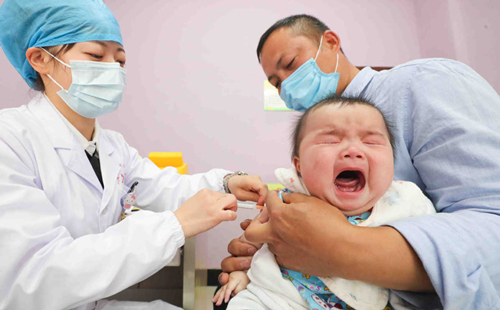Health indicators for Zhejiang residents improve

A child cries during an injection at a health center in Huzhou, Zhejiang province on April 24, 2020. WANG ZHENG/FOR CHINA DAILY
East China's Zhejiang province's public health sector made significant progress during the 13th Five-Year Plan (2016-2020), according to a dedicated press conference held by the National Health Commission in late December.
In 2019, Zhejiang residents' life expectancy was 79.13 years, up 0.91 years from 2015, and their health literacy level stood at 29.49 percent, 10.32 percent higher than the national average. In addition, the maternal mortality rate and infant mortality rate respectively dropped to 4.08 per 100,000 individuals and 1.88 per 1,000 individuals respectively.
Major health indicators for Zhejiang residents have already come close to or reached the corresponding levels in high-income countries.
Zhejiang is also using digital technologies to reform its health services. The functions for the electronic health card and the electronic health insurance card have been integrated in the province. Patients seeking treatment in hospitals at and above the county level don’t even have to carry those physical cards as long as they can show those QR codes on their cellphones.
The overall efficiency of the province's 3A-level public hospitals is ranked third among all Chinese provinces in a national assessment.





 play
play